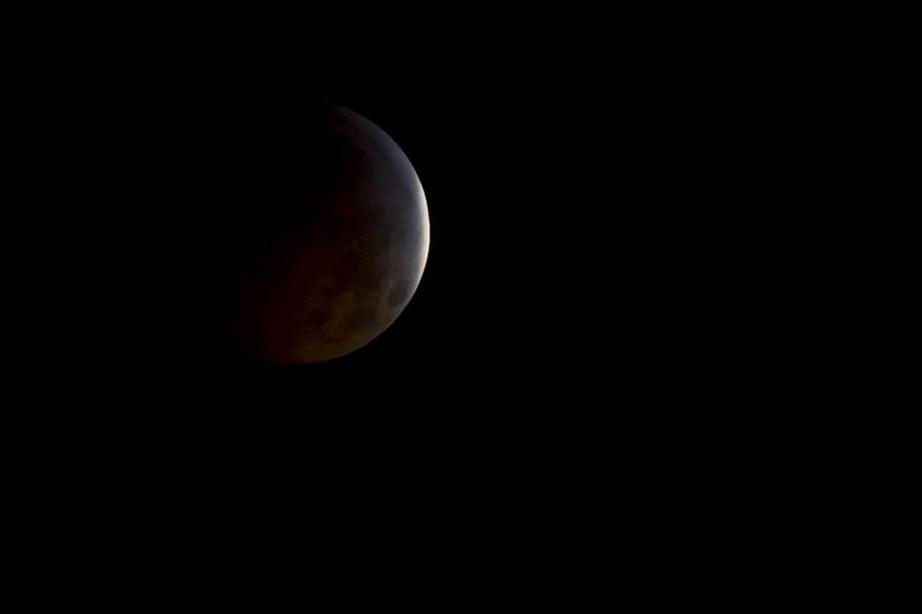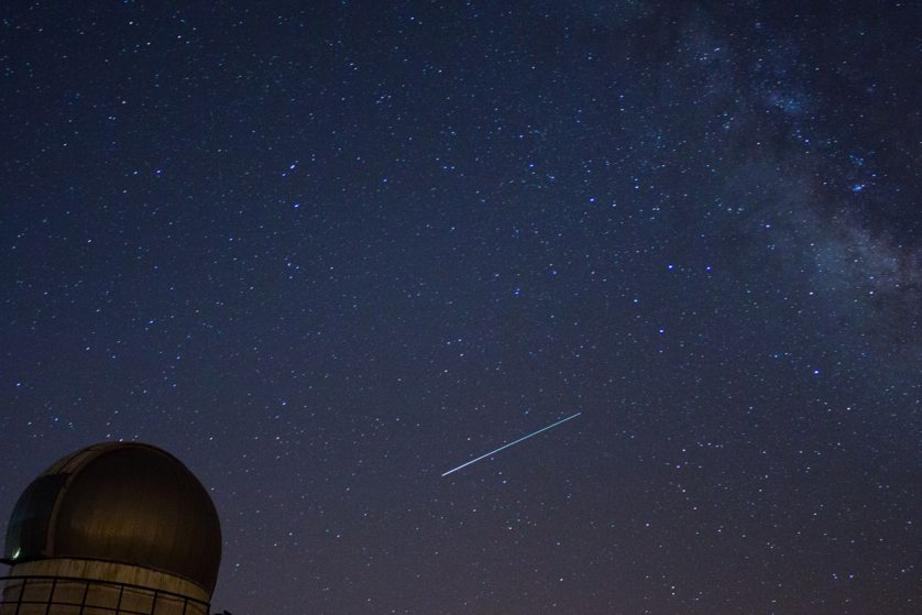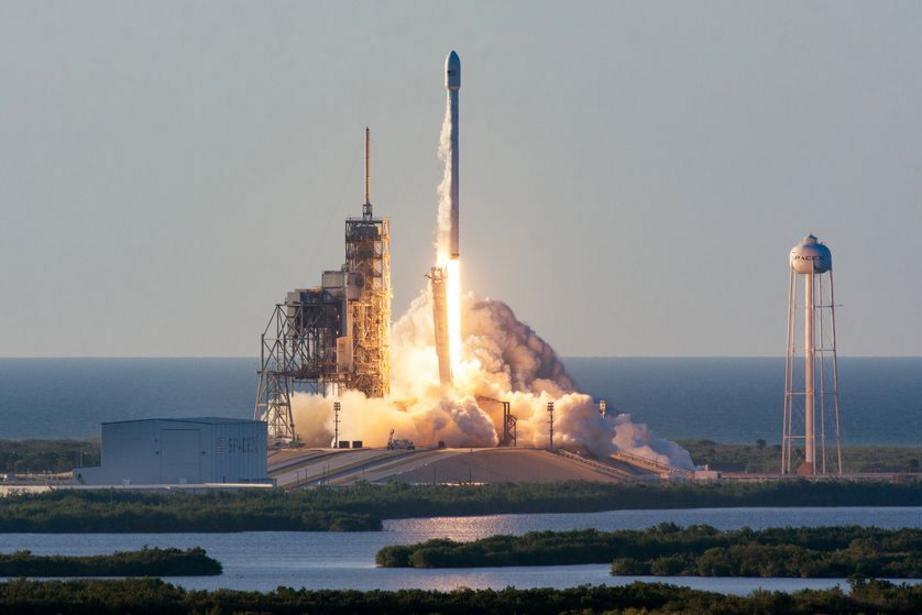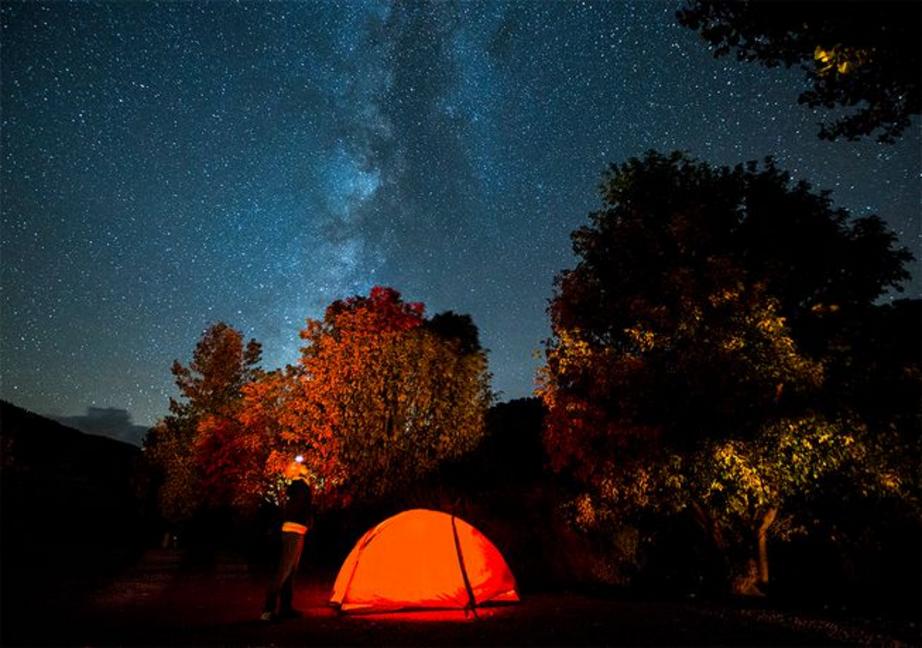What to see in the night sky in April
There's plenty to see, from a Falcon 9 rocket to a meteor shower.
Interested in a bit of skygazing in April? Here are some big events to watch for.
It's hard to believe, but almost we've reached that time of the year when stargazers don't necessarily need to grab hats, gloves and other warmth-inducing accessories. We like to think of April as the gateway to those evenings in the summer when all that's required is a blanket and a cold beverage.
But regardless of how temperamental the weather may be where you are, there's plenty in the evening sky to keep you distracted this month. What celestial events do the heavens have in store? Check out our list below for some April highlights. Wishing you clear evenings!
New moon (April 16)
 April's new moon offers the perfect time for amateur astronomers and professionals alike to observe faint objects in the night sky.
April's new moon offers the perfect time for amateur astronomers and professionals alike to observe faint objects in the night sky.
April stargazing hits a high note mid-month with a new moon, making this the best time to view faint objects such as galaxies and star clusters. So get out those telescopes and enjoy the (slightly) warmer evenings!
Only a few days later on April 21, the world celebrates International Astronomy Day. Local stargazing clubs, as well as observatories and other astronomy groups, will likely be holding special events. Jump here to search for a group near you!
Catch a glimpse of the International Space Station (all month)
 The International Space Station is best seen about an hour before dawn and an hour after sunset.
The International Space Station is best seen about an hour before dawn and an hour after sunset.
If you've never seen the International Space Station glide overhead, take a moment this month to make it happen! I've witnessed the event a handful of times, and it's rather incredible how bright the station becomes as it catches light from the sun. It's also fast –– with only a few minutes of observation before it loses its glint and dips below the horizon.
Want to give it a shot? The best place to start is NASA's excellent "Spot The Station" site, which provides dates and times and where to look based on your location. The other is Sky Guide, an app for your smartphone that will alert you where and when to look, and also give you information on all kinds of other incredible highlights and celestial sights above your head.
Lyrid meteor shower (April 22)
 The annual Lyrid meteor shower appears to radiate from the constellation Lyra the Harp, near the star Vega.
The annual Lyrid meteor shower appears to radiate from the constellation Lyra the Harp, near the star Vega.
The annual Lyrid meteor shower, which dates back in recorded history at least 2,600 years, will reach its peak on the morning of April 22, with little interference from a waxing moon.
Unlike other annual meteor showers like the Perseids or Leonids, the Lyrids aren't particularly well known in modern times for lighting up the night with shooting stars. That said, thanks to dark skies in advance of an approaching new moon, you should see at least 10 to 20 meteors per hour during the shower's peak.
But hey, you never know. Back in 1982 and 1922, upwards of 100 meteors per hour were counted. In 1803, a stunning 700 per hour were witnessed.
"This electrical phenomenon was observed on Wednesday morning last at Richmond and its vicinity, in a manner that alarmed many, and astonished every person that beheld it," wrote a journalist at the time. "From one until three in the morning, those starry meteors seemed to fall from every point in the heavens, in such numbers as to resemble a shower of sky rockets ..."
Block 5 arrives on the SpaceX Falcon 9 (April 24)
 Starting in April 2018, SpaceX will release an upgraded (and final) version of its workhorse Falcon 9 rocket.
Starting in April 2018, SpaceX will release an upgraded (and final) version of its workhorse Falcon 9 rocket.
The final revision of the Falcon 9, the workhorse of the SpaceX fleet, will receive its first commercial test later this month. Called Block 5, the upgrade will improve thrust and optimize the performance and stability of the booster's landing legs. The new variant will also move SpaceX further along in its journey to create a fully reusable rocket system, allowing boosters to be reused up to 10 times with only inspections in-between flights and up to 100 times with refurbishment.
"The design intent is that the rocket can be reflown with zero hardware changes," Musk said last spring. "In other words, the only thing you change is you reload the propellant."<
of the company's new Big Falcon Rocket (BFR) design.
For those who've never watched a SpaceX launch before, part of the excitement in viewing the company's livestreams is witnessing not only liftoff, but also the dramatic reentry and landing of the Falcon 9 booster. Thanks to cameras on the ground and on the rocket itself, the missions offer an up-close (and sometimes historic) view of spaceflight. (MNN has been picking up these livestreams on affiliated Facebook pages.)
The Pink Moon (April 29)
 The full 'pink' moon is so-named because its timing follows the appearance of the moss pink, or phlox, flower.
The full 'pink' moon is so-named because its timing follows the appearance of the moss pink, or phlox, flower.
Sorry to disappoint, but the moon won't actually turn a shade of pink on April 29. Instead, this nickname comes from the appearance of wild ground phlox and its stunning pink flowers throughout North America. The April full moon is also known as the Sprouting Grass Moon, the Egg Moon and the Fish Moon.
This month's full moon will be at its largest on April 29 at about 8:58 p.m.
Editor's note: This story has been updated since it was originally published in March 2017.

